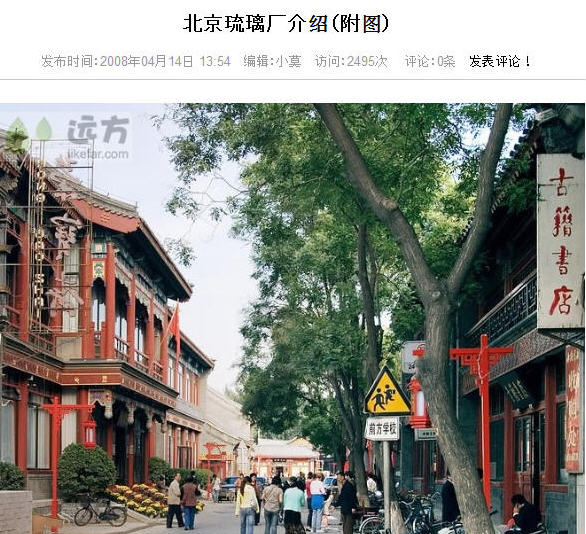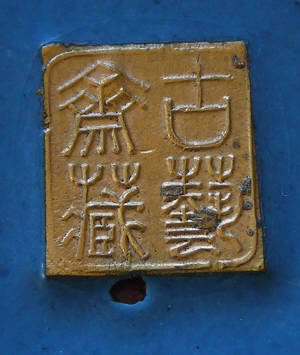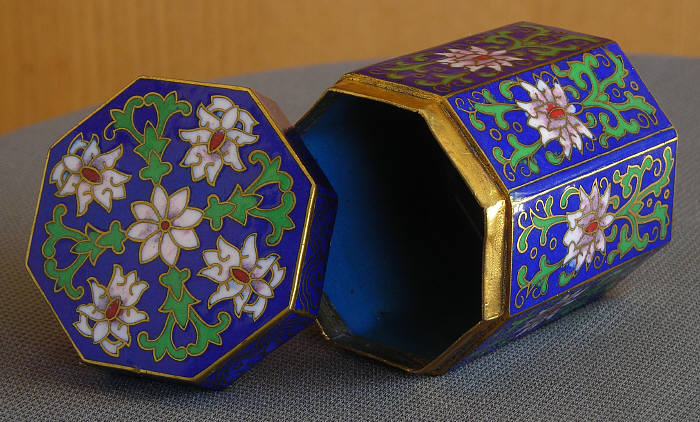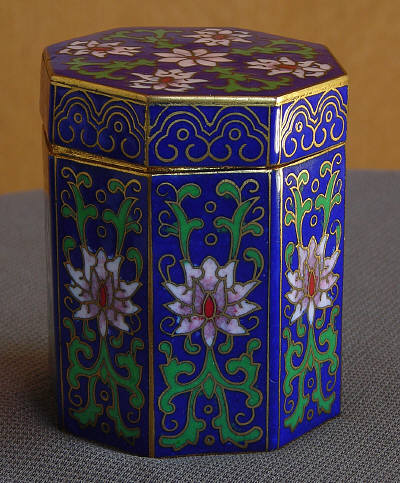
|
Subject:古藝齋藏 Gu Yi Zhai Zang
Posted By: Bill Thu, Apr 29, 2010
古藝齋藏 (traditional Chinese)
古艺斋藏 (simplified Chinese)
From right to left, top to bottom, the four character of the collector's
mark (not maker's mark) are:
Gu Yi Zhai Zang
Gu - Old, antique;
Yi - arts;
Zhai - study, studio, room, building;
Zang - storage, collection.
Gu Yi Zhai 古艺斋 is possibly a room or a study (inside a house) or a building
named by its owner for a storage place for his antiques.
Zang - means collection.
The whole term can be loosely translated as:
"The Collection of Gu Yi Zhai"
or
"The Collection of the Antique Arts Study (room)"
Incidentally, there is a street block called 琉璃厂 Liu Li Chang, in BeiJing,
where a lot of OLD Chinese shops were located. Many of these shops sell
antiques, antique books, etc and had been there for a long time. There
is one called 古艺斋 Gu Yi Zhai but it was supposed to be a shop that sells
musical instruments. I cannot say for sure if the mark on your cloisonne
piece has anything to do with this old BeiJing shop or not.
I could only find one cloisonne piece with the similar "Mark" but I was
unable to open the link to find more info.
A paid professional appraiser may be able to find out more about your piece.�
Bill
http://www.86gudong.com/Article.asp?BClassID=20&ArtID=4166
http://www.likefar.com/scenedetail.cfm/argu/cid,16-id,803




|
 Maker's Mark On Cloisonne Box
Maker's Mark On Cloisonne Box  ( China & Japan ) - Tom - Apr 28, 2010 (04:22 PM)
( China & Japan ) - Tom - Apr 28, 2010 (04:22 PM)  古藝齋藏 Gu Yi Zhai Zang
古藝齋藏 Gu Yi Zhai Zang  - Bill - Apr 29, 2010 (09:36 PM)
- Bill - Apr 29, 2010 (09:36 PM)  Re: 古藝齋藏 Gu Yi Zhai Zang - rat - Apr 30, 2010 (08:24 AM)
Re: 古藝齋藏 Gu Yi Zhai Zang - rat - Apr 30, 2010 (08:24 AM)  Re: 古藝齋藏 Gu Yi Zhai Zang - Tom - May 02, 2010 (09:54 AM)
Re: 古藝齋藏 Gu Yi Zhai Zang - Tom - May 02, 2010 (09:54 AM) 



